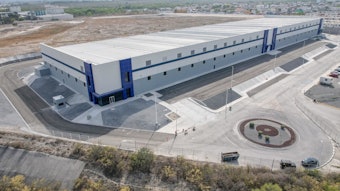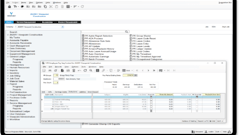
Salvage crews are readying to remove the large piece of bridgework from atop the cargo ship Dali, which slammed into the Francis Scott Key Bridge in the Baltimore Harbor on March 26. Six construction workers died in the incident. Cargo traffic has been severely limited since the incident, but federal agencies and construction contractors have been working since then to reopen the harbor.
In a statement Monday, officials said they are taking into consideration many factors before removing the bridge piece.
According to a press release:
Prior to removing the bridge piece, salvage teams must meticulously analyze and factor in numerous hazards and obstacles resulting from the bridge's impact. Crushed containers, hull damage, and weight shifts are among the critical considerations crews must address during the bridge removal and refloating operation of the ship.
The safety of the salvage crew members remains a top priority during the complex operations.
Specialized equipment has been employed to closely monitor the positioning and movement of the M/V DALI and the bridge wreckage in contact with it.
“We’ve got a total of six of, what we call, inclinometers that measure tilt on key locations of the span and key locations of the ship so we can watch how it’s pitching and rolling with tide, and wind,” said Rob Ruthledge, a contractor working for the Key Bridge Unified Command. “We have a sensor measuring the relative position of the span on the ship so we can see, if for some reason, it starts to slip. We also have what are called string gauges, which can measure, in real-time, the stress, while they are performing operations.”
Crews have also been working to remove the portions of bridge span 17, which are in contact with the opposite side of the M/V DALI.
The Key Bridge Unified Command remains committed to restoring full access to the Fort McHenry Channel as swiftly and safely as possible and is providing updates regularly.
The public is reminded that the Unified Command continues to maintain a 2000-yard maritime Safety Zone around the incident site. The TFR extends for two nautical miles in radius from the center of the bridge and from the surface up to and including 1500 feet above ground level.
The safety zone remains in effect and is intended to protect personnel, vessels, and the marine environment. No vessel or person will be permitted to enter the safety zone without obtaining permission from the COTP or a designated representative.
There is a zero-tolerance policy regarding any UAS/drone use anywhere within the “No Drone Zone” established by the Federal Aviation Administration. Anyone who attempts to fly a UAS/drone in any prohibited manner may be subject to arrest, prosecution, fines, and/or imprisonment.
The Key Bridge Response 2024 Unified Command includes the:
- U.S. Coast Guard
- U.S. Army Corps of Engineers
- Maryland Department of the Environment
- Maryland Transportation Authority
- Maryland State Police
- Witt O’Brien’s representing Synergy Marine
The Unified Command’s operational priorities are ensuring the safety of the public and first responders, accountability of missing persons, safely restoring transportation infrastructure and commerce, protecting the environment, and supporting the investigation.


























